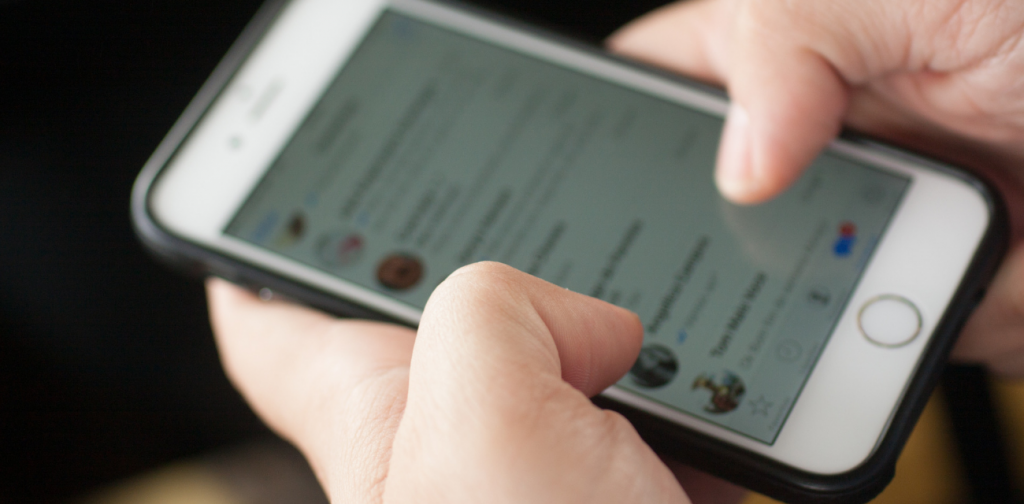“Until we create a nation that regularly wants to employ a person with autism, assure for quality education for each person with autism, and eliminates the far too many unnecessary obstacles placed in the way of success for a person with autism, we really won’t be as successful as we must. We need to get all in our nation to embrace the belief that each person with autism is valued, respected and held to the highest level of dignity and must be provided every opportunity for the highest quality of life each and every day.”
– Scott Badesch, President of the Autism Society of America
Tuesday the 2nd of April 2019 marked World Autism Awareness Day. As part of the United Nations’ observance of this day and its commitment to ‘leave no one behind’ it hosted a full day conference on the role of assistive technologies in driving greater social and economic inclusion of people with autism.
“For many people on the autism spectrum, access to affordable assistive technologies is a prerequisite to being able to exercise their basic human rights and participate fully in the life of their communities, and thereby contribute to the realization of the SDGs. Assistive technology can reduce or eliminate the barriers to their participation on an equal basis with others.”
– United Nations
GSMA Mobile for Development, as part of the recently DFID-funded strategy, has started work towards narrowing the digital inclusion gap for persons with disabilities – including those with Autism. In collaboration with the GDI Hub, the GSMA is generating insights to better understand the accessibility gap to basic services and opportunities and identify ways to narrow this gap through innovative assistive technologies, including mobile. The recent GSMA report ‘Leveraging the Potential of Mobile for Persons with Disabilities’ presented the five key barriers for social and economic inclusion of persons with disabilities in emerging markets and showcased how mobile can help overcome these barriers. This blog presents different ways in which mobile technologies can support and empower individuals with autism and their families and caregivers.
Autism and opportunities for digital technologies
According to the National Autistic Society (NAS) in the UK, autism is defined as “a lifelong developmental disability that affects how people perceive the world and interact with others”. Globally, it is estimated that 1 in 160 children has an autism spectrum disorder, but its prevalence remains largely unknown in low- and middle-income countries. Due to the way in which autistic individuals interact with their world, it is not uncommon that they feel overwhelmed and suffer high-levels of anxiety. Technologies have been made available to support them and ensure their wellbeing.
Digital tools for assistive learning and social skills for children with autism
The NAS suggests that the introduction of technology enables improved skills development, enhances motivation to learn and improves the concentration of children with autism. Digital tools have been designed to that support the learning process of autistic children. Existing solutions range from enabling more effective communication of information between educators and students with autism, providing robot companions for autistic children to help them feel more comfortable in classroom settings as well as facilitating assistive learning with augmented reality. Digital tools also help children with autism manage their anxiety or to relax, while enhancing their ability to communicate and develop their social skills.
Children with autism face particular challenges engaging in new environments and digital solutions for creating social stories can help them develop a greater social understanding and stay safe. Social stories are short, usually visual, descriptions of a particular situation, event or activity, which include specific information about what to expect in that situation and why. For instance, the social story app developed by TouchAutism provides a platform for parents, educators and caregivers to create personalised social stories and visual schedules to help them communicate with their children and prepare them for social situations. Although there are a wealth of social story apps and online content repositories, curating content and identifying credible, affordable or free solutions can prove to be a time-consuming activity for caregivers.
“I use a ‘social stories’ app to explain social concepts to my son to prepare him for outings […] It would be helpful to have access to a free digital library of social stories, specifically relating to hospital settings and emergency situations. It’s very hard for a parent to put together an effective social story by themselves.”
– Lara, a mother of a child with autism and social story app user
Extending opportunities for adults with autism
Digital technology can support people with autism to attend university, participate in formal employment and travel independently. Bespoke solutions like the Brain in Hand app that includes free telephone support provided by the NAS, provides timely, personalised support to people with autism to help them remember activities, reduce anxiety and feel supported. Among other features, the app utilises a traffic light system to help individuals monitor their anxiety and request additional help from the NAS if needed. The app also allows key players, such as lecturers or employers to better understand how autistic individuals are feeling and responding to their environment, allowing them to support them in a more meaningful way.
“I find change to plans without warning hard to deal with […] Suggesting my ideas at workshops is very tough for me, especially socialising, which would leave me feeling extremely anxious. Overall, Brain in Hand helped me with eye contact, workshop ideas, socialising with friends, communication with friends and confidence. I would say… [Brain in Hand is one] hundred per cent useful!”
– Daggy, a second-year university student living with autism
Support for parents and caregivers of persons with autism
There is a wide range of digital solutions that can support parents and caregivers of autistic children to manage their day-to-day activities, and provide greater support and care for their children. These include solutions like AngelSense, a GPS & voice-monitoring solution designed to help families keep track of children with special needs, as well as scheduling solutions like Birdhouse for autism that offers caregivers the ability to keep track of behaviours, health and daily living tasks. Solutions like Birdhouse also help to bridge the gap between caregivers and therapists and doctors, by enabling effective data collection and sharing between these individuals for more effective care management. Furthermore, digital platforms that provide access to a support groups for parents of children with autism provide them with a channel to share information and encourage each other through shared experiences.
“I use WhatsApp to connect with the whole autism community in my neighbourhood. This allows me to have a voice [for autism] even if it’s just amongst people going through the same things we are. It gives me access to shared information and connections and even helps me set up age-appropriate play dates with kids with similar [autism] profiles.”
– Lara, a mother of a child with autism
Responsible use and development of digital technologies for autism
The selection of the most appropriate digital solution can sometimes overwhelm users. On its website, BridgingApps consolidates nearly 100 apps for children and adults with autism that range from being free to having a $300 price tag. For caregivers and people with autism, identifying relevant, useful and credible digital solutions can often be a challenging and time consuming endeavour. The University of Edinburgh has provided a few suggestions of what to look out for when judging the evidence base of digital solutions. Likewise, NAS provides a useful guide for parents on the responsible use of technology for their children with autism. In addition to providing tips for the management of screen time and online safety advice, the guide details the limitations of technology and emphasises that technology should always be used as an enabler or compliment to a range of approaches contributing to an autistic child’s well-being, learning and development.
User-centred product development and design is crucial for ensuring the relevance and usability of digital solutions for autistic individuals and their caregivers. Solutions like SIMO, an autism simulator, can help product and service designers to better understand autistic individuals and how they experience the world. These types of tools as well as existing autism design guides help designers to create products and services with enhanced usability for people with autism.




